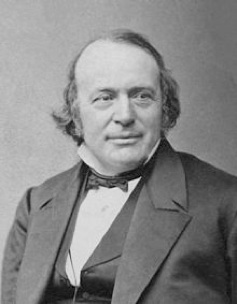Louis Agassiz




The idea of Continental Glaciation came from Louis Agassiz in 1840. Agassiz’ hypothesis says that much of the continent of North America was covered by glacial ice that was 2 miles thick and which extended over much of the midwest. Agassiz was Swiss, and so he knew glaciers well. When he came to America, he found only mountain glaciers in the west, but he saw many features which he knew from Switzerland and which were associated with glaciers (eskers, moraines, outwash, kettle lakes, drumlins, kame terraces).


The hypothesis upset many people, because it conflicted with other ideas. But it has survived for 160 years of severe testing, mainly because no one could propose an idea which explained everything seen so directly. Agassiz was a professorial figure who was overconfident and who made mistakes, but this idea has survived and evolved into the Theory of Continental Glaciation, which has been applied all over the world.
Earth Scientists take great notice of Continental Glaciation and its record in the geologic past, because of the lessons this can teach us. We are very conscious of climate changes now with strong evidence for global warming and its link to the Antropocene and human causes. The Pleistocene is a time of oscillating climate changes, and it occurred relatively recently, so the causes are still operational and influential. Before broad awareness of the current trend toward global warming, some scientists anticipated a future continental glaciation episode would affect North America, Europe and Asia. Is fossil fuel combustion overriding a natural trend toward global cooling? Analysis of environmental data with a global scale is underway in elaborate and diverse efforts, and scientists have tried hard to engage governments and the public, with only moderate success.
Understanding Global Warming is a crucial scientific goal. It seems that understanding the things that caused Pleistocene glaciation is a key. So looking around the Keweenaw at glacial geology and the lessons that teaches us are vital to our future.
When Glaciers covered Michigan Mich DNR
Dorr & Eschman (1970) Good geo ref for Michigan!
Gillespie et al (2008) Recent Michigan Geo Source
Isle Royale and Glaciers: Huber 1973



